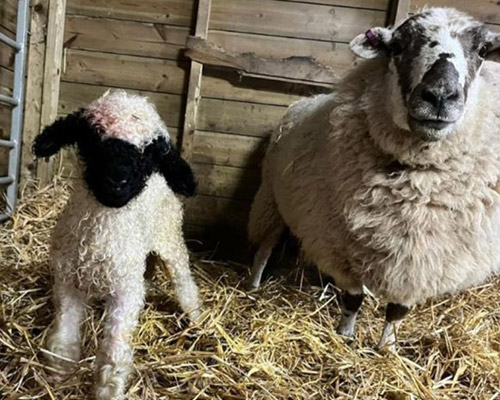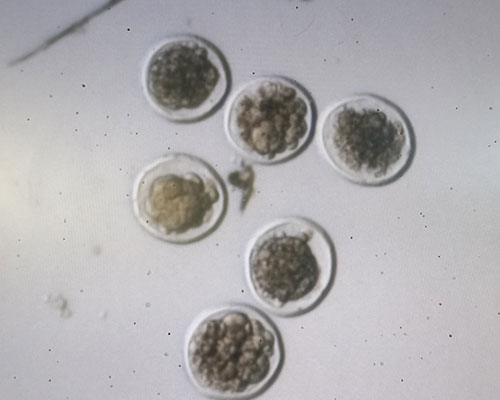Improving Flushing Results & Recipient Selection
Improving Flushing Results
Flushing donor ewes has the potential to be a very rewarding process, albeit it can also be a very disappointing one. These are some pointers that may improve success rates:
- Ensure donor ewes are of good health and have had any vaccinations well in advance of starting a flush programme
- Ensure ewes are of an appropriate body condition for their breed (2.5-3.75), aim for fit not fat. Ideally on a rising plane of nutrition going in to the programme and this continues through the programme.
- Minimise stress during the flush programme.
- Correct any trace element deficiencies before the programme starts eg selenium
- Follow the flush programme injections exactly, the timings are important! If you think you will struggle with the programme contact us for clarification. We do also offer a donor ewe programming service where your ewes stay with us for the entire programme.
- Use Regulin 60 days before ET programme
- Use teaser rams to improve oestrus detection
- AI with both fresh and frozen semen – sampling of lambs to prove progeny for DNA is possible
Recipient Selection and Management for Embryo Transfer
After the involved process of flushing a ewe to harvest embryos we want to give those embryos the best chance of becoming a positive pregnancy and a viable lamb. By selecting and managing recipients appropriately we can help increase the implantation success rate.
When deciding how many recipients to programme for implantation bear in mind the expected number of embryos (average 6 per flushed ewe), whether they are to be implanted as singles or twins and that not all of those programmed will cycle accordingly.
When considering implanting embryos as singles vs twins strongly bear in mind that if a ewe does not hold or loses the lambs we may be losing two embryos rather than one. The saying “all your eggs in one basket” comes to mind.
Selection
The ideal recipient would meet the following criteria:
- Have lambed successfully before with no complications eg a caesarean section
- Be able to rear a lamb ie good udder
- Be in a good body condition but not fat, ideally on a rising plane of nutrition
- Be cycling (see management section) – some breeds cycle through the year eg Dorsets so can make ideal recipients for out of breeding season recipients.
Management – Pre-Programme
Ensure the following management tasks are completed before beginning the programme.
- Recipients are up to date with Enzovax and Toxovax as required. No closer than 4 weeks before the implantation date.
- Any potential trace element deficiencies are rectified, utilisation of a multi trace element drench may be beneficial. Selenium deficiency is associated with poor fertility in the ewe.
- Utilisation of Regulin before beginning the programme can aid recipients to cycle out of season.
- Keeping recipients away from rams before starting the programme and utilisation of teasers during the programme will aid synchronisation and cyclicity
Management – Post-Programme
Post implantation be consistent with the management (as it was before starting the programme). Consistent with feeding and no sudden changes. Avoid stress, moving ewes and handling procedures unless necessary for the ewes welfare for 1 month after implantation.
Some post implantation stressors are unavoidable eg hot weather and can vastly affect implantation success. Ensure recipients have shade and water access.
Teaser/Ram Post Implantation
Your programme will give a date post implantation (normally a week) for you to add a raddled ram/teaser to the implant group. Monitor the recipients for raddle to indicate a return to oestrus and an unsuccessful implantation. Record the ewes which repeat and report this back to us as we can correlate it with our records.





